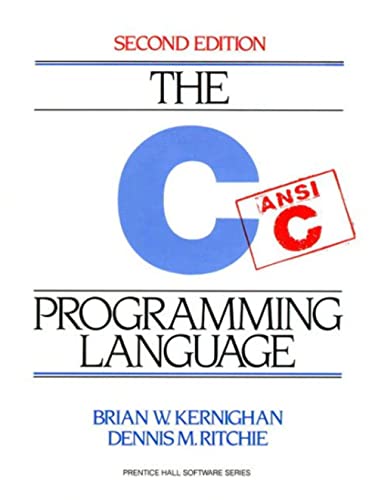Computer science is such a broad field. The best books should allow beginners to learn the basics seamlessly, gradually advancing to more complex topics.
From texts on coding to reference and theory, the following introductory texts will satisfy your knowledge needs.
- Top pick: Python Programming
- Runner up: Computer Science Principles
- Also great: Computer Programming for Absolute Beginners
Designed to be utilized as a primary text for college-level courses, “Python Programming: An Introduction to Computer Science, 3rd Edition” introduces the art of programming with Python as the preferred medium.
It is ideal for learners who study best with an academic curriculum.
You will learn the core skills of computer science, including design, programming, and problem-solving.
There are plenty of examples and practice problems that you can use, including multiple-choice quizzes.
Zelle also integrated great graphics to help grasp concepts more manageable and more efficiently.
“Python Programming” does not provide a comprehensive discussion on Python. Instead, you will get to learn the programming language while solving computer science problems.
This edition employs the established approach to teaching introductory computer science expected of all Zelle books.
It has been updated to reflect new technologies, with a few changes in content. These include the exclusion of most eval uses and the addition of discourse on computer security.
If you are just beginning your journey in computer science, this textbook is an excellent starter.
One of the most comprehensive introductions to computer science, the book covers the basics, from hardware/software to web design and programming.
You will learn critical skills such as compressing and storing data, organizing spreadsheets, and using Adobe Photoshop.
The book also contains units dedicated to security and encryption, the Internet, Javascript programming, and HTML and CSS web design.
This latest edition of “Computer Science Principles” contains new content on Boolean and logic gates, compression, and computing impacts.
While intended for advanced placement classes, the book is also ideal for anyone interested in learning computer science fundamentals.
There is enough depth in there to challenge the geekiest of the geeks.
Hare's pointers are straightforward to understand. It encourages creativity rather than stressing formulaic rigidity.
Whether or not you are taking an AP Computer Science course, this book is a helpful supplement to your study.
The book covers the absolute basics of computer science and its application to different programming languages.
You will find thorough explanations and pertinent examples in pseudocode, programming constructs, statements, variables, and data types.
Wassberg also included clear instructions on coding, creating applications, using control structures, and recycling codes using functions.
You can also use best practices as a model to write your own code like a professional.
Some of the chapters in the book are the following:
• Software Projects and How We Organize Our Code
• Sequence – The Basic Building Block of a Computer Program
• Working with Data – Variables
• Program Control Structures
“Computer Programming for Absolute Beginners” is for anyone who wants a head start in studying programming.
It is also an excellent resource for those who want to learn how to program on their own.
After mastering this book, learning Python, Java, and other programming languages will be more manageable.
The book is a primer on Python programming, delivering up-to-date coverage of topics paired with traditional supplements like Jupyter Notebooks.
Using real-world datasets and AI technologies, you can work on projects and exercises that can transform the fields of business, academia, and government.
There are also hundreds of implementation studies and examples that you can utilize for a more hands-on approach to data science and Python programming.
The Deitels textbook offers the perfect balance of teaching the fundamentals and applying data techniques into practice.
It is intended to assist students in making use of the considerable number of existing libraries and completing tasks with minimal code.
The concepts in “Intro to Python for Computer Science and Data Science” are reinforced with rich Python examples to facilitate learning.
By modifying the models given, you can implement your own solutions to data science problems.
The exercises are relevant, fun, and engaging, fostering a favorable climate to conduct meaningful analyses.
Without a doubt, this book is an excellent introduction to deep learning.
For years, “The Pragmatic Programmer: Your Journey To Mastery, 20th Anniversary Edition” has served as a helpful resource for generations of programmers.
It is designed to help you develop better software, at the same time, experience the joy of coding.
The topics are far-reaching, from lessons on personal accountability and professional development to architectural procedures.
You will learn how to create flexible codes that you can quickly adapt and reuse.
Other skills you will learn are:
• Harnessing the power of basic tools
• Guarding against security vulnerabilities
• Solving underlying problems of concurrent code
• Doing tests, including property-based testing
“The Pragmatic Programmer” demonstrates the best methods and significant hazards in software development.
This latest edition has been updated with new content and examples, containing 10 new self-contained sections filled with fascinating anecdotes and analogies.
It is one of those rare technology books that you will peruse and peruse again over the years.
Whether you are a new coder or already an experienced programmer, you will find fresh insights each and every time.
The book is designed to emulate a course presented at the Massachusetts Institute of Technology.
It has a considerable impact on the computer science curricula across the globe.
You will learn to deal with different computational models, functional and concurrent programming, objects with state, lazy data structure and evaluation, and nondeterministic programming.
There are also sections dedicated to higher-order procedures in graphics, including the applications of stream processing,
This second edition contains updated content, mostly on programming systems implementation, counting interpreters, and compilers.
Abelson and Sussman also incorporated new approaches that mirror their teaching practices at MIT.
You will also appreciate the new exercises integrated into the book.
All programs in “Structure and Interpretation of Computer Algorithms, 2nd edition” have been revised to work with Scheme implementation following the IEEE standard.
It is not an accessible text to read, but it is worth all your effort.
This is one book that should be on every programmer's list.
Designed for the computer science course, “Computer Science Illuminated, 7th Edition” offers a solid foundation for students majoring in the study.
It is also a comprehensive resource material for anyone looking to cross over into computer science.
The book uses neutral language to explain hardware, programming, applications, operating systems, and communications concepts.
There are exhaustive discussions on cloud computing, security system, and Big Data,
You will find sections in programming languages like JavaScript, Python, and C++.
Dale and Lewis also incorporated real-world examples presented in pseudocode.
The seventh edition has been fully revised while retaining the comprehensive coverage of the previous versions.
It presents a layered approach that is both unique and groundbreaking, allowing you to move across levels of computing in an organized manner.
Some of the updated contents include ethical and current issues and trends and features like biographical sketches and “Did You Know” boxes.
With easy-to-follow discourses and excellent illustrations, “Computer Science Illuminated” is a perfect choice for beginners like you.
The book presents math that supports advanced programming and algorithm analysis, aiming to provide a solid foundation for the skills needed in solving complex problems, evaluating sums, and more.
Major topics include recurrences, elementary number theory, generating functions, and recurrences.
You will also find extensive discourses on integer functions, binomial coefficients, discrete probability, and asymptotic methods.
There are about 500 exercises, separated into six categories.
Since all the drills come with complete answers, the book is valuable for self-study.
The second edition of “Concrete Mathematics” includes new content on mechanical summation.
The index and bibliography have also been expanded, while more nontrivial improvements have been added to almost every page.
Thoroughly engaging, the book contains marginal graffiti contributed by students who utilized the material.
Discussions are done informally, allowing you to have fun while learning the essential techniques presented.
This is an indispensable reference for computer scientists and users of math in all disciplines.
“The C Programming Language” is a complete course on ANSI standards to help you learn how to program in C.
You will learn some of the best practices for optimizing language use, including the proficient manipulation of pointers, initializations, and style of declaring variables.
To fully understand this book, you should be familiar with basic programming concepts, such as variables, loops, and functions.
Background on the data structure is also essential. This way, you can easily understand and follow most of the examples.
Kernighan and Ritchie’s extensive discussions will ensure that you pick up the most essential areas of C, allowing for less stress in debugging codes.
They also address the side effects of the process, including precedence of statement evaluation and infix/postfix increments.
As you go along the chapters, you will notice that the book is structured to reuse functions built from previous sections.
“The C Programming Language” comes with the official C language reference manual.
If you are looking for a readable book on C language, this one is for you.
It was written by the trio of Paul Gries, Jennifer Campbell, and Jason Montojo.
You will learn the basics of algorithms, design, testing, and debugging. There are also comprehensive discussions on programming with Python 3.6.
The book has everything you need to write programs able to crack real-world problems and produce quality codes.
It skillfully tackled the standard issues that every programmer needs to know, from approaching problems to testing codes so you can avoid setbacks.
“Practical Programming” is organized into two parts.
This first section covers fundamental ideas in programming, including storing and manipulating information, organizing codes, controlling execution flows, and program planning.
The second consists of stand-alone chapters on more advanced topics, such as creating and managing types of information, databases, object-oriented programming, and graphical user interface.
Whether you are new to programming or already a seasoned veteran, this practical book is a fantastic resource for your study.
“Introduction to Algorithms” covers a wide range of subjects, from basics to advanced topics.
The discussions are in-depth yet entirely accessible to all levels of readers.
You will find that the chapters are independent and can be used as study units.
Cormen described algorithms in English and in pseudocode. If you have previously done a little programming, this should not be a problem.
The explanations are clear and simple to understand without sacrificing comprehensiveness or mathematical rigor.
Since its initial publication in 1989, the book has been widely used in universities and is the standard reference for professionals.
This latest edition has been updated to include new materials on matchings in machine learning, bipartite graphs, and online algorithms.
It also contains new topics on solving hash tables, recurrence equations, suffix arrays, and potential functions.
You will appreciate the 140 new exercises, colorful visuals, and more gender-neutral style of writing.
The supplemental website also contains new materials for your reference.
“Introduction to Algorithms” is an insightful and modern treatment of algorithms.











